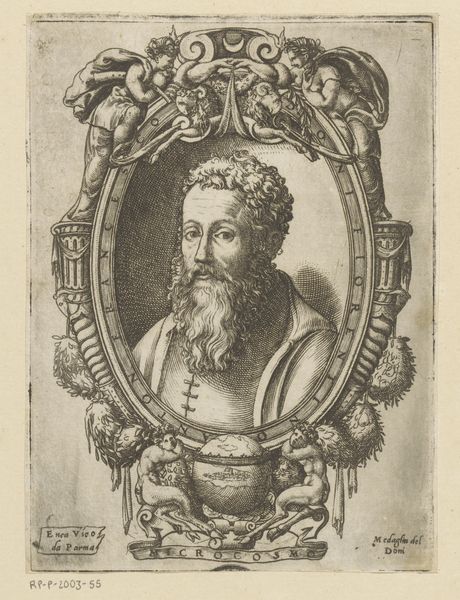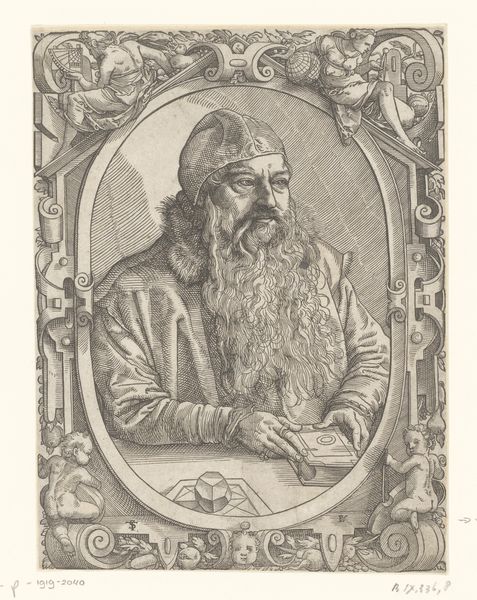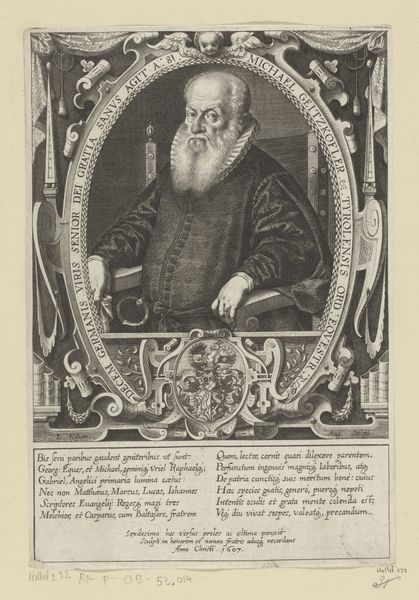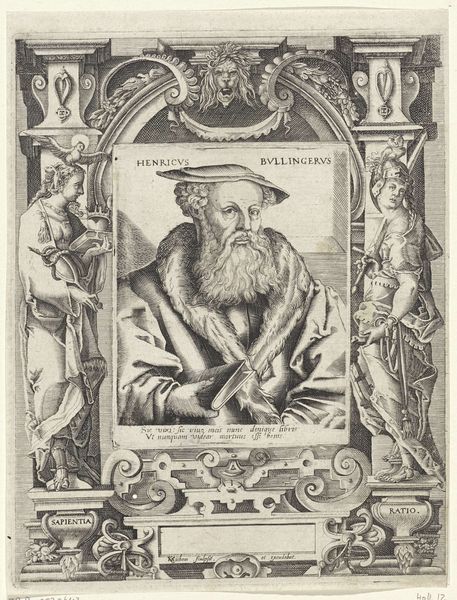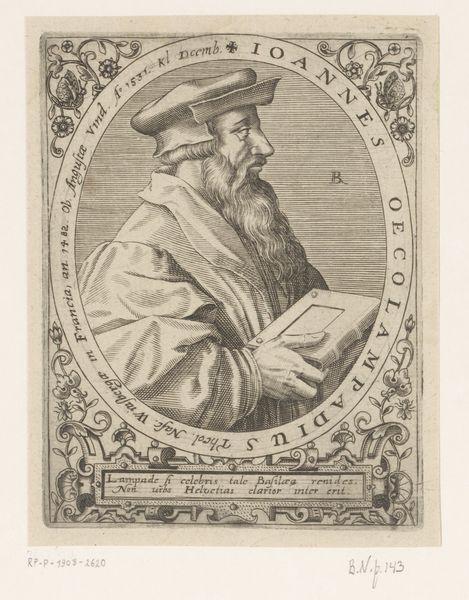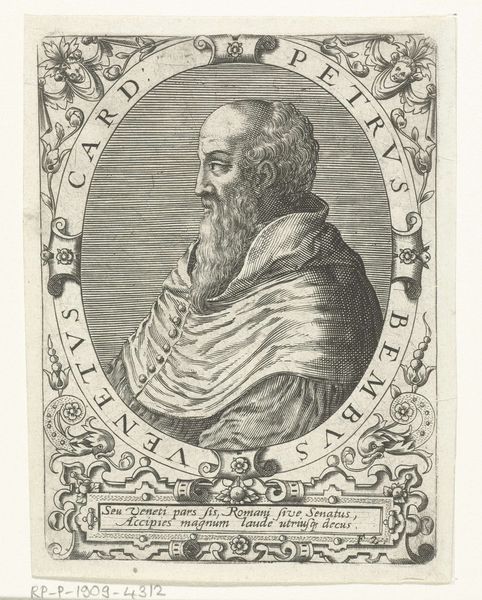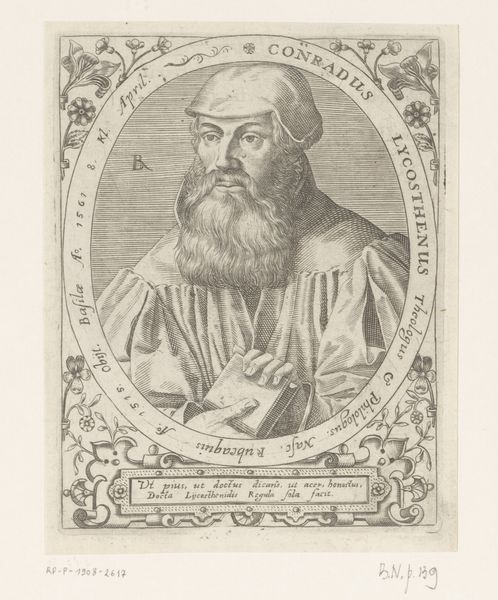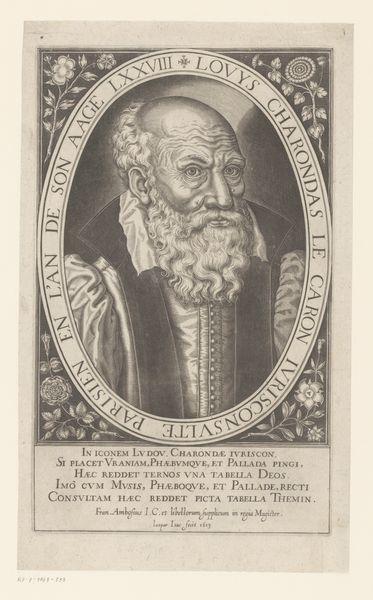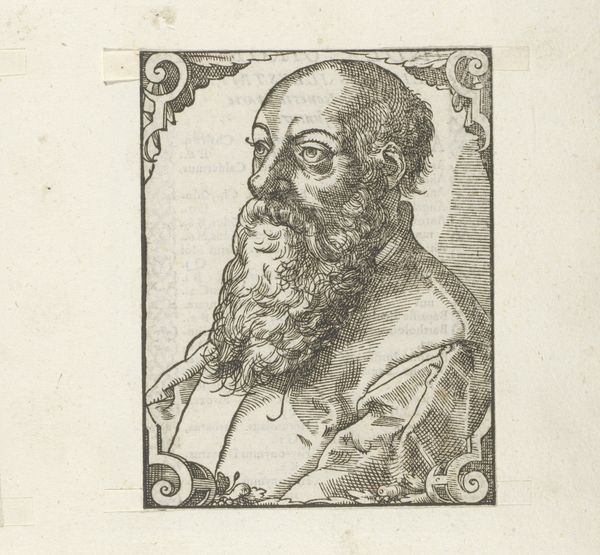
print, engraving
#
portrait
# print
#
figuration
#
italian-renaissance
#
engraving
Dimensions: height 150 mm, width 112 mm
Copyright: Rijks Museum: Open Domain
Curator: I’m immediately struck by the detail—it's almost photographic in its rendering of texture. The engraving captures the light on his face, the wiry strands of his beard... You can almost feel the paper's texture, imagining Vico hunched over his workbench, carefully etching each line. Editor: Absolutely. The artwork, housed here at the Rijksmuseum, is an engraving by Enea Vico from around 1550. It's titled "Portret van dichter en filosoof Giovan Battista Gelli," so a portrait of the poet and philosopher Giovan Battista Gelli. It's fascinating how these prints circulated in the Renaissance, acting like a pre-modern internet for ideas and images, isn’t it? Curator: Precisely! Gelli seems so… contemplative. The meticulous details suggest intellectual weight, yes? But something in the eyes tells of deeper secrets—the sort of truths gained only through immense effort. Does anyone know the story of that expression etched into his features, that mixture of burden and bliss? Editor: The choice to depict Gelli framed within that elaborate oval cartouche – complete with scrolls and mythical figures – is certainly interesting. These aren't just decorative elements, are they? Curator: Certainly not! These figures likely represent aspects of Gelli's philosophical or poetic persona. Mythological creatures embodying wisdom, eloquence… perhaps hints at specific allegories relevant to his works. And the whole aesthetic roots the image firmly within the High Renaissance tradition. Editor: Framing figures with classicising architectural ornaments was typical for portraiture in books and public pronouncements about learned people. It was one way of making sure that those men became publically recognized. How interesting that in 1550 there was also that impulse, even with printed works! Curator: Knowing Vico, this level of intricacy wasn't just stylistic flair, it was likely an extension of his own intellectual explorations. Every curve, every shadow feels laden with symbolic intent—like Vico and Gelli are in dialogue across time and materials. I find this encounter thrilling. Editor: Indeed, it really puts one in a thoughtful state. How Gelli looked at that exact historical moment! Curator: I think so too.
Comments
No comments
Be the first to comment and join the conversation on the ultimate creative platform.

